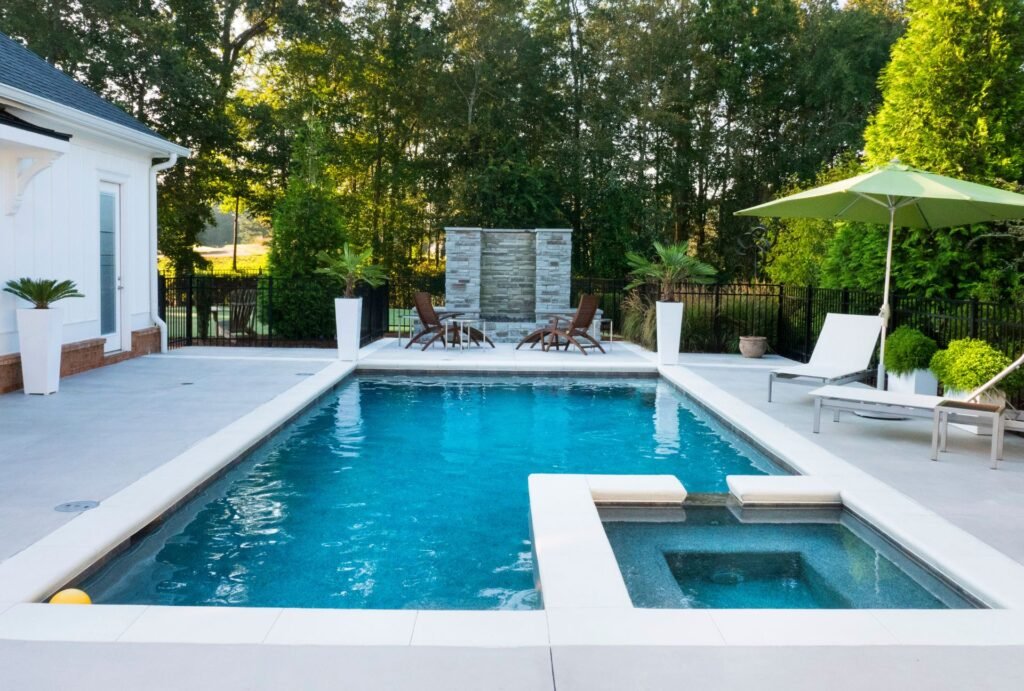Adding an inground pool to your property isn’t just about enhancing outdoor aesthetics—it’s a long-term investment in your lifestyle and home value. In New Zealand, where outdoor living is a big part of daily life, installing an inground pool can offer relaxation, entertainment, and exercise opportunities year-round. However, it’s not a decision to take lightly. From council regulations to soil assessments, there’s a lot to consider before digging begins.
This article outlines the most important steps and insights to help Kiwi homeowners navigate the process of planning and installing inground pools with confidence.
Understanding the Basics of Inground Pools
Inground pools are permanent fixtures constructed directly into the ground, offering a sleek and long-lasting option for homeowners. Unlike above-ground alternatives, they offer greater design flexibility, increased durability, and better integration with outdoor living spaces.
There are several types of inground pools to choose from. Concrete pools are highly customizable and durable but take longer to build. Fibreglass pools come pre-moulded and are quicker to install with minimal upkeep. Vinyl-liner pools offer a budget-friendly option, though they typically require liner replacements every 7 to 10 years. Choosing the right pool type depends on your goals, budget, property size, and desired features.
Key Considerations Before Installation
Local Regulations and Council Approvals
In New Zealand, pool construction is tightly regulated. Any pool deeper than 400mm requires a building consent and must comply with the Building Act 2004 and the Building Code. Pool fencing is mandatory to prevent accidents, and councils may also have zoning restrictions that affect where you can place your pool. Before beginning construction, make sure to check local bylaws, secure the necessary approvals, and work with certified professionals who understand compliance requirements.
Soil Conditions and Site Preparation
Before any excavation starts, a geotechnical soil test should be conducted to assess site suitability. Factors like soil stability, drainage, and groundwater levels can affect construction plans and costs. In areas with unstable or waterlogged soil, additional engineering solutions such as retaining walls or waterproofing layers may be necessary. Proper site assessment early in the process helps avoid costly adjustments later.
Designing Your Ideal Pool Space
Consider the Primary Purpose
Understanding how you intend to use your pool will guide its design. Will it be mainly for lap swimming, casual lounging, entertaining guests, or family fun? The purpose will influence depth, shape, access points, and features like spa jets, tanning ledges, or steps.
Sunlight and Wind Exposure
Positioning your pool to maximize sun exposure helps keep water warmer naturally, reducing heating costs. Similarly, shielding your pool from prevailing winds enhances comfort and minimizes water evaporation. Consider the orientation of your home and yard, and observe how sunlight and wind interact with your outdoor space throughout the day.
Aesthetic and Functional Integration
Today’s homeowners in New Zealand are moving towards pools that blend harmoniously with their landscapes. Glass fencing, native landscaping, and materials like natural stone or timber decking are common trends. Consider how your pool will visually connect with patios, gardens, and indoor-outdoor transitions. The more integrated it feels, the more usable and valuable the space becomes.
Budgeting for an Inground Pool
Installing an inground pool is a significant financial commitment, and budgeting accurately is essential. A basic fibreglass pool may start from around $35,000 NZD, while a custom-designed concrete pool can easily exceed $100,000 NZD, depending on features and finishes.
Beyond the construction cost, homeowners should account for fencing (a legal requirement), landscaping, lighting, and pool heating systems. Don’t overlook ongoing maintenance costs either, including cleaning, electricity for filtration systems, and periodic servicing. Planning a comprehensive budget from the start helps prevent cost overruns and ensures a smoother project.
Maintenance: What to Expect Long Term
Owning an inground pool comes with the responsibility of regular upkeep. Maintaining water quality, managing pH levels, and ensuring filtration systems are working properly all require attention. Regular tasks include skimming debris, vacuuming the pool floor, testing chemical levels, and cleaning filters.
Many homeowners in New Zealand opt for automated pool systems that handle some of these functions, or they hire professional maintenance services. Investing in the right tools and maintenance schedule not only prolongs the life of your pool but also ensures a safer and more enjoyable swimming environment.
Is an Inground Pool Right for You?
An inground pool is a rewarding addition to any home, but it’s not without challenges. The installation process involves planning, permissions, upfront costs, and ongoing maintenance. It’s important to weigh your long-term lifestyle goals against the practical aspects of owning a pool.
If you’re considering adding a pool, browsing the resources at this New Zealand-based pool specialist can provide further insights and inspiration. Whether you’re early in your planning or ready to break ground, getting expert advice can make the process more manageable.
Final Thoughts
Adding an inground pool can enhance your property’s value and create a hub for family fun and relaxation—but only when planned with care. From navigating local council regulations to understanding the long-term upkeep, informed decisions early on will help ensure your project runs smoothly and delivers the lifestyle benefits you’re aiming for.
With the right approach and guidance, your dream pool can become a valuable and lasting part of your home.
